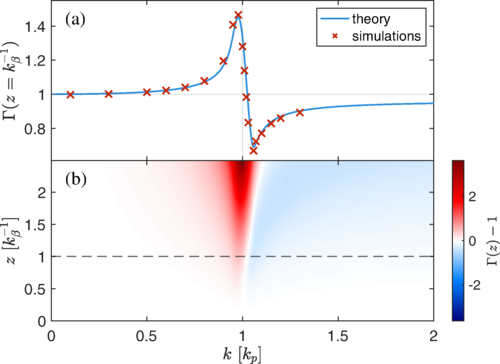PhD student Mariana M demonstrates new physics in plasma-based acceleration in PRL publication

In a paper recently published in the prestigious journal Physical Review Letters, entitled “Mitigation of the Onset of Hosing in the Linear Regime through Plasma Frequency Detuning”, a research team from IST, in collaboration with the Max Planck Institute for Physics in Germany, proposes a solution to a problem that threatens one of the existing concepts for a plasma-based particle accelerator. The problem consists of an instability that can develop when a particle beam propagates in plasma and is subject to the associated electric fields, which can be extremely strong, resulting in its potential disruption. This work is led by the Physics Department (DF) PhD student Mariana Moreira, under the supervision of Prof. Jorge Vieira from DF and GoLP/IPFN.
Plasma-based particle acceleration promises the emergence of much more compact and potentially cheaper accelerators. This idea was first put forward in 1979, and since then different possibilities of realizing the basic concept have multiplied. The AWAKE experiment at CERN seeks to demonstrate one of these concepts, where a long and extremely powerful proton beam is guided into a 10-meter-long plasma source.
When a relativistic beam of charged particles (e.g. protons) propagates in plasma, its charge either repels or attracts the free plasma electrons (we generally ignore the motion of ions on this time scale due to their larger mass), causing them to oscillate transversely in place (imagine a car racing past a traffic sign). The motion of each electron disturbs the electrons around it too, which ultimately leads to a coherent oscillation of all the electrons in reaction to the passing beam, with a characteristic frequency that depends exclusively on the density of the plasma. This coherent displacement of negative charge relative to the positive ion background generates an electric field. This set of effects, termed as a plasma wave, in practice propagates with the injected particle beam.
The powerful electric field generated in the plasma also contains a transverse component that can focus or defocus the particles in a relativistic beam. This means that any axial misalignment between a long beam and the plasma wakefields can quickly “derail” the beam and trigger the hosing instability. Due to the misalignment, the beam is jolted up and down by the transverse fields of the plasma wave, and this effect compounds both along the beam and over time.
The paper published in Physical Review Letters demonstrates that the centroid (i.e., the mean transverse position of the particles) oscillation of a long beam can be treated as a classical oscillator driven by a harmonic external force (the plasma wakefields) under certain conditions. By controlling the frequency of the external force, which can be achieved by varying the plasma density, it is possible to control the growth of the hosing instability, with potential applications in its mitigation.








